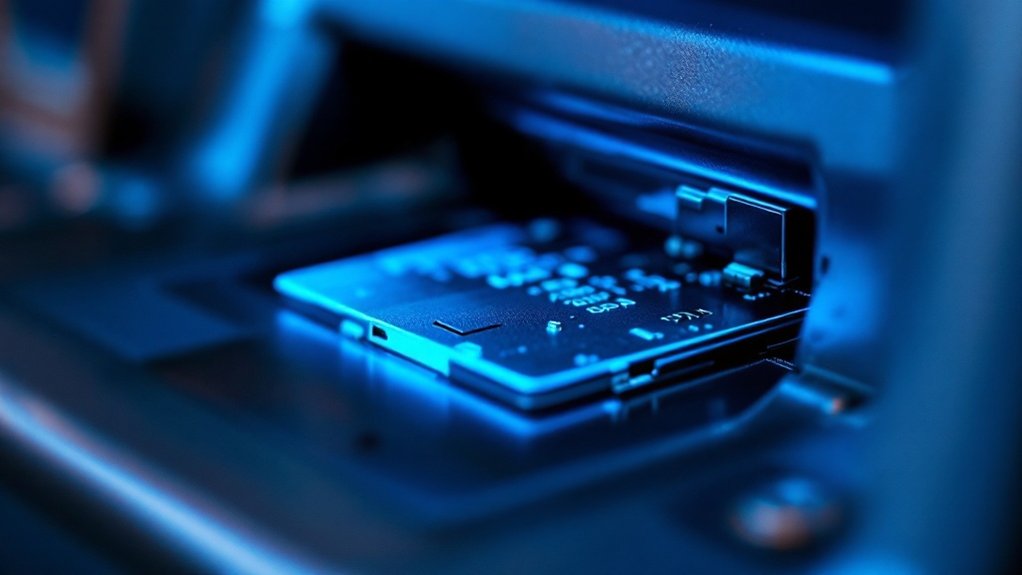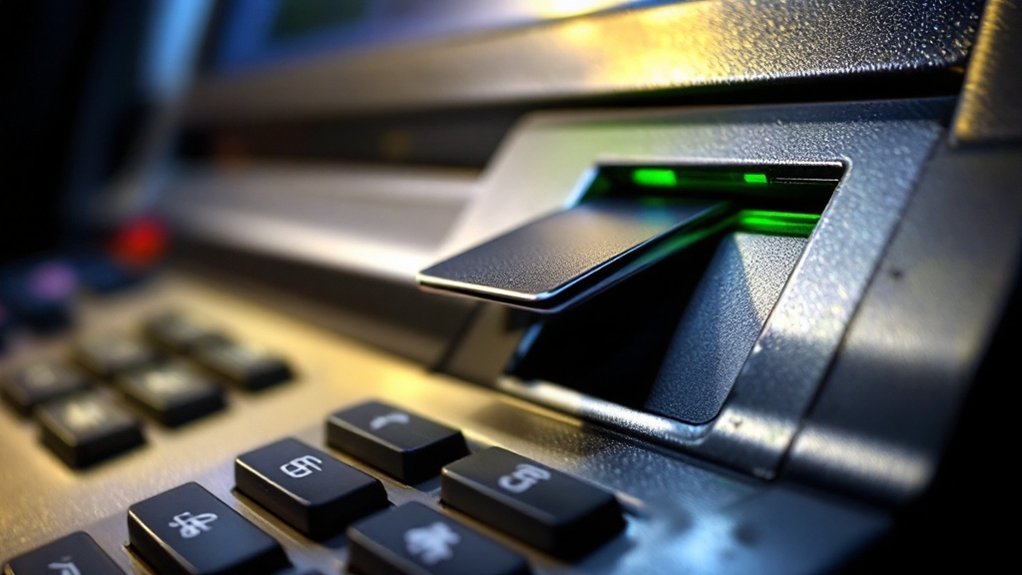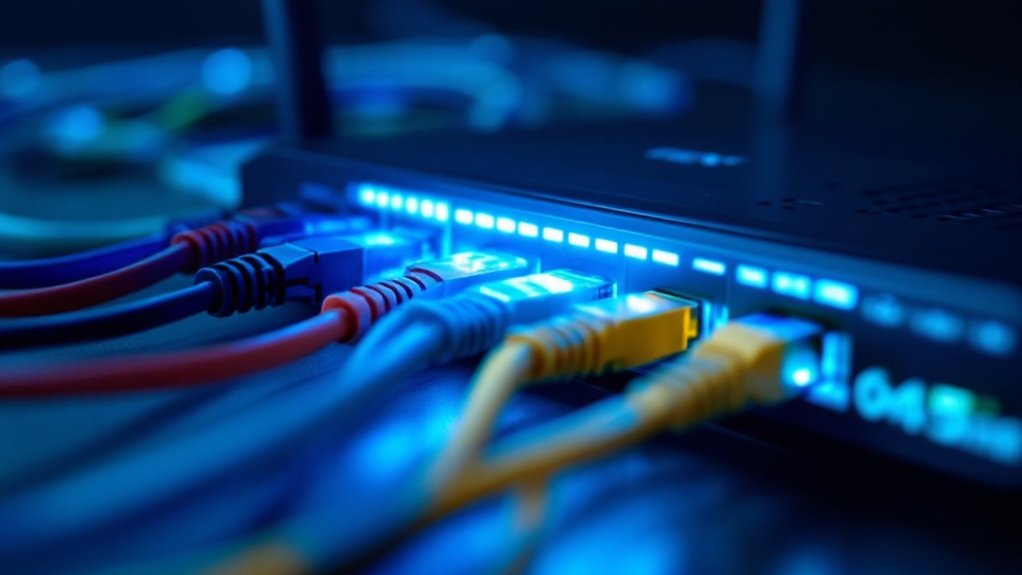Skimming devices are sophisticated tools used by criminals to illicitly capture payment card data from ATMs, point-of-sale terminals, and e-commerce platforms, resulting in annual losses exceeding $1 billion globally. These devices, which can be physical or digital, covertly steal magnetic stripe information and PINs through concealed cameras or overlaid keypads, with recent incidents affecting up to 380,000 individuals in a single attack. As modern skimmers are increasingly difficult to detect, understanding key prevention strategies can help protect against this growing security threat.

As criminal enterprises continue to advance their technological capabilities, skimming devices have emerged as a significant threat to financial security worldwide, resulting in an estimated $1 billion in annual losses to institutions and consumers. These sophisticated tools exist in multiple forms, including physical devices that attach to ATMs and point-of-sale terminals, digital variants that infect e-commerce platforms, and handheld units utilized by corrupt employees to capture payment card data illicitly.
Skimming devices pose a billion-dollar threat as criminals deploy sophisticated tools to steal payment data through ATMs and digital platforms.
The methodology behind skimming operations involves the covert capture of magnetic stripe or chip data from payment cards, often accompanied by PIN theft through concealed cameras or overlaid keypads. In 2022 alone, 441,882 credit card records were misused in the United States, as well as 1.8 million identity theft and imposter scam reports were filed, highlighting the scale of this criminal enterprise. The impact of these attacks can be devastating, as evidenced by recent incidents where 380,000 airline passengers’ data was stolen in just two weeks. EMV chip technology has become increasingly crucial in preventing skimming attacks at point-of-sale terminals. Digital skimmers can remain undetected for extended periods while they capture customer data during online checkout processes.
Detection presents significant challenges for both consumers and businesses, as modern skimmers are designed to effortlessly blend with legitimate payment devices. Internal skimmers, impossible to detect from an ATM’s exterior, can operate undetected for extended periods, while e-skimming malware requires merely 22 lines of code to compromise hundreds of thousands of records. This technological sophistication has created a persistent cat-and-mouse game between security professionals and criminal organizations. Criminals often target gas station terminals due to their accessible locations and lower security monitoring.
Prevention strategies focus on both individual and institutional measures. Consumers are advised to inspect payment terminals for tampering, shield PIN entries, and utilize chip-enabled or contactless payment methods when possible.
For businesses, extensive security protocols include implementing regular security scans, encrypting data transmission, and deploying AI-powered risk management tools for continuous monitoring. The most effective defense combines vigilant consumer awareness with strong institutional security measures, as criminals constantly adapt their methods to circumvent new security features.
Frequently Asked Questions
How Long Does It Take for Criminals to Install Card Skimmers?
Card skimmer installation typically takes between 15-30 seconds for experienced criminals using external devices.
Installation times vary based on several factors, including device type and location conditions.
As external skimmers can be attached rapidly, internal skimmers require more time but offer better concealment.
Criminals often exploit busy periods and use distraction techniques to complete installations without detection, particularly in high-traffic retail environments.
Can Skimmers Work on Contactless Payment Cards and Mobile Payments?
Advanced skimmers can potentially intercept contactless payment data through sophisticated relay attacks, though these require close physical proximity.
Although NFC technology encrypts transactions and uses tokenization for added security, specialized Bluetooth skimmers can still capture information from tap-to-pay terminals.
Mobile payments offer additional protection through biometric authentication and device-specific tokens, making them typically more secure than physical contactless cards against skimming attempts.
Are There Any Mobile Apps That Can Detect Nearby Skimming Devices?
Several mobile applications are available to detect potential card skimming devices. The Card Skimmer Locator for iPhone scans for Bluetooth Low Energy signals, whereas Android’s Skimmer Scanner particularly targets devices with the HC-05 identifier.
These apps, although not infallible, can identify suspicious Bluetooth signatures commonly associated with skimmers. Nonetheless, experts recommend using these tools alongside visual inspection, as the apps may generate false positives and cannot detect non-Bluetooth skimming devices.
What Should I Do if I Suspect I’ve Used a Compromised Card Reader?
If someone suspects using a compromised card reader, immediate action is essential.
They should contact their financial institution to freeze the account and request a replacement card, at the same time carefully reviewing recent transactions for unauthorized charges.
Filing reports with law enforcement and the FTC creates an official record.
Moreover, monitoring credit reports, setting up transaction alerts, and changing PINs adds vital protection against potential fraud.
How Often Should Businesses Check Their Payment Terminals for Skimming Devices?
Businesses should implement a multi-tiered inspection schedule for payment terminals, with daily checks required in high-risk locations and busy environments at the start of each shift.
Standard retail operations typically maintain weekly examinations, whereas all devices warrant thorough monthly inspections.
During peak shopping periods, inspection frequency should increase, and all terminals should utilize tamper-evident seals alongside regular serial number verification against inventory records.









